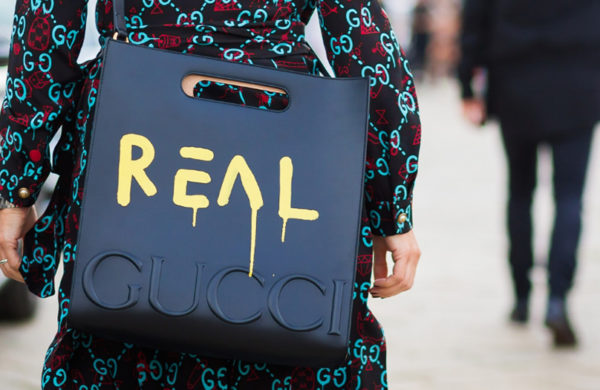The shadowy business of counterfeits has taken over the globe to become a $1.2-plus trillion industry. Despite extensive – and often, expensive – enforcement efforts by many brands, particularly those in the luxury, pharmaceutical, and more generally, consumer goods, sectors, the international trade in counterfeit goods, ranging from food and dietary supplements to handbags and luxury cars, is positively booming.
For instance, the market for counterfeit clothing, textiles, footwear, handbags, cosmetics, and watches, alone, amounted to a whopping $450 billion – and growing – as of last year. On an annual basis, somewhere between “100,000 and one million consumers as a result of counterfeit medicine,†according to The Atlantic. Entirely counterfeit brick-and-mortar stores are sweeping the Chinese mainland, while buyers from Sweden to Dubai are landing counterfeit Porches and Ferraris.
In short: the market for counterfeit goods is vast in terms of the money and geographies at play, and also incredibly diverse when considering the types of products that are being replicated and sold.
This article is the first in a series, entitled, “Counterfeiting: The Big Business of Fakes,†which endeavors to examine the state of counterfeiting in 2018 in the United States and beyond in connection with everything from luxury and high fashion products to the black market for automobiles and cigarettes. This introductory post sets out some of the more widely misused vocabulary associated with the practice of counterfeiting as a prerequisite to what will be a broader look at how the fake trade has evolved over time and how it currently effects industries and individuals.
In order to get a handle on the footprint of the counterfeit trade, it is essential to distinguish the term from those with which it is commonly – and erroneously – used interchangeably, including but not limited to “knock off†and “infringement.†This distinction is critical, because unlike these terms, counterfeits represent a particularly egregious form of copying and as a result, are held to a specific, heightened legal standard.
What is a counterfeit, exactly? There are a few key elements at play, all of which must be met for something to be deemed a counterfeit) at play. (These elements are set forth in 18 U.S.C. § 2320(d)).
Primarily (and most fundamentally), in order for a product to be considered a counterfeit, it must include another party’s federally registered trademark or one that is “substantially indistinguishable†from the other party’s trademark. (Note: A trademark is any word, name, symbol, device, or any combination, used or intended to be used to identify and distinguish the goods/services of one seller or provider from those of others, and to indicate the source of the goods/services).
Second, a counterfeiter must be knowingly and deliberately using another party’s trademark without the authorization to do so. This use is almost always paired with the counterfeiter’s intent to deceive the consumer by presenting itself as the trademark holder by way of the fake logo, fake tag, etc.
Third, in accordance with U.S. law, the trademark that is being counterfeited must be federally registered with the U.S. Patent and Trademark Office, and must be in use (in commerce) by the trademark holder.
Fourth, the goods that the counterfeiter is making/selling must be of the type that are covered by the trademark holder’s registrations; trademarks are registered by “class of goods or services,†remember. Clothing and footwear, for instance, is included in Class 25.
Finally, the use of the counterfeit trademark must be “likely to cause confusion, to cause the mistake, or to deceive†the average consumer in terms of the source of the product.
With such critical vocabulary out of the way, stay tuned for our full series of posts dissecting the global counterfeit trade in the coming weeks.
http://www.thefashionlaw.com/home/the-counterfeit-report-the-impact-on-the-fashion-industry
